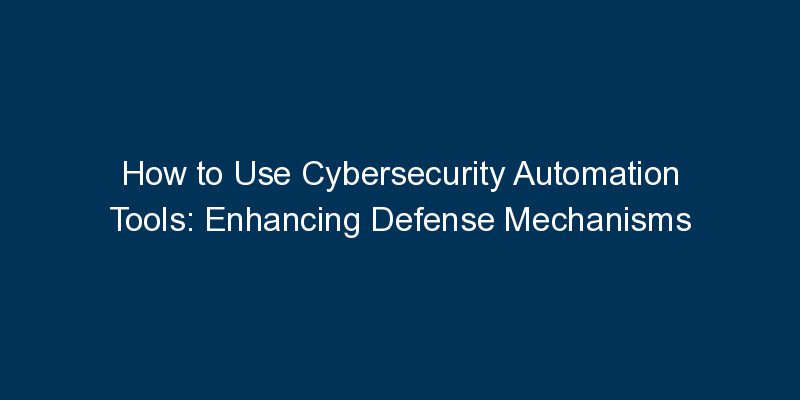In the ever-evolving landscape of cybersecurity, automation has become a key strategy to strengthen defense mechanisms against sophisticated threats. This blog provides a comprehensive guide on how to use cybersecurity automation tools, empowering organizations to respond swiftly and effectively to potential security incidents.
Introduction:
As cyber threats become more advanced, the manual efforts of cybersecurity teams may fall short. Cybersecurity automation tools offer a solution by automating routine tasks, enabling faster threat detection, response, and mitigation. This guide explores the essential steps to leverage cybersecurity automation tools effectively.
Key Steps to Use Cybersecurity Automation Tools:
- Identify Automation Use Cases: Identify specific use cases within your cybersecurity operations that can benefit from automation. This may include threat detection, incident response, vulnerability management, and compliance checks.
- Select Suitable Automation Tools: Choose cybersecurity automation tools that align with your organization’s needs and infrastructure. Popular tools include SOAR (Security Orchestration, Automation, and Response) platforms, SIEM (Security Information and Event Management) systems, and scripting languages like Python.
- Integration with Security Infrastructure: Integrate automation tools seamlessly into your existing security infrastructure. Ensure compatibility with security devices, endpoint solutions, and other critical components of your cybersecurity ecosystem.
- Define Automated Workflows: Develop and define automated workflows for common security processes. This could involve automating the response to specific alerts, orchestrating incident investigations, or automatically blocking malicious activities.
- Continuous Monitoring and Optimization: Implement continuous monitoring to ensure that automated processes are functioning as intended. Regularly optimize automated workflows based on threat intelligence, changing security landscapes, and feedback from cybersecurity professionals.
- Incident Response Plan Enhancement: Integrate automated responses into your incident response plan. This ensures a coordinated and efficient reaction to security incidents, reducing response times and minimizing potential damage.
Conclusion:
Cybersecurity automation tools play a vital role in fortifying defense mechanisms against evolving cyber threats. By following the steps outlined in this guide, organizations can harness the power of automation to enhance their cybersecurity posture, respond swiftly to incidents, and mitigate potential risks effectively.






















Comments